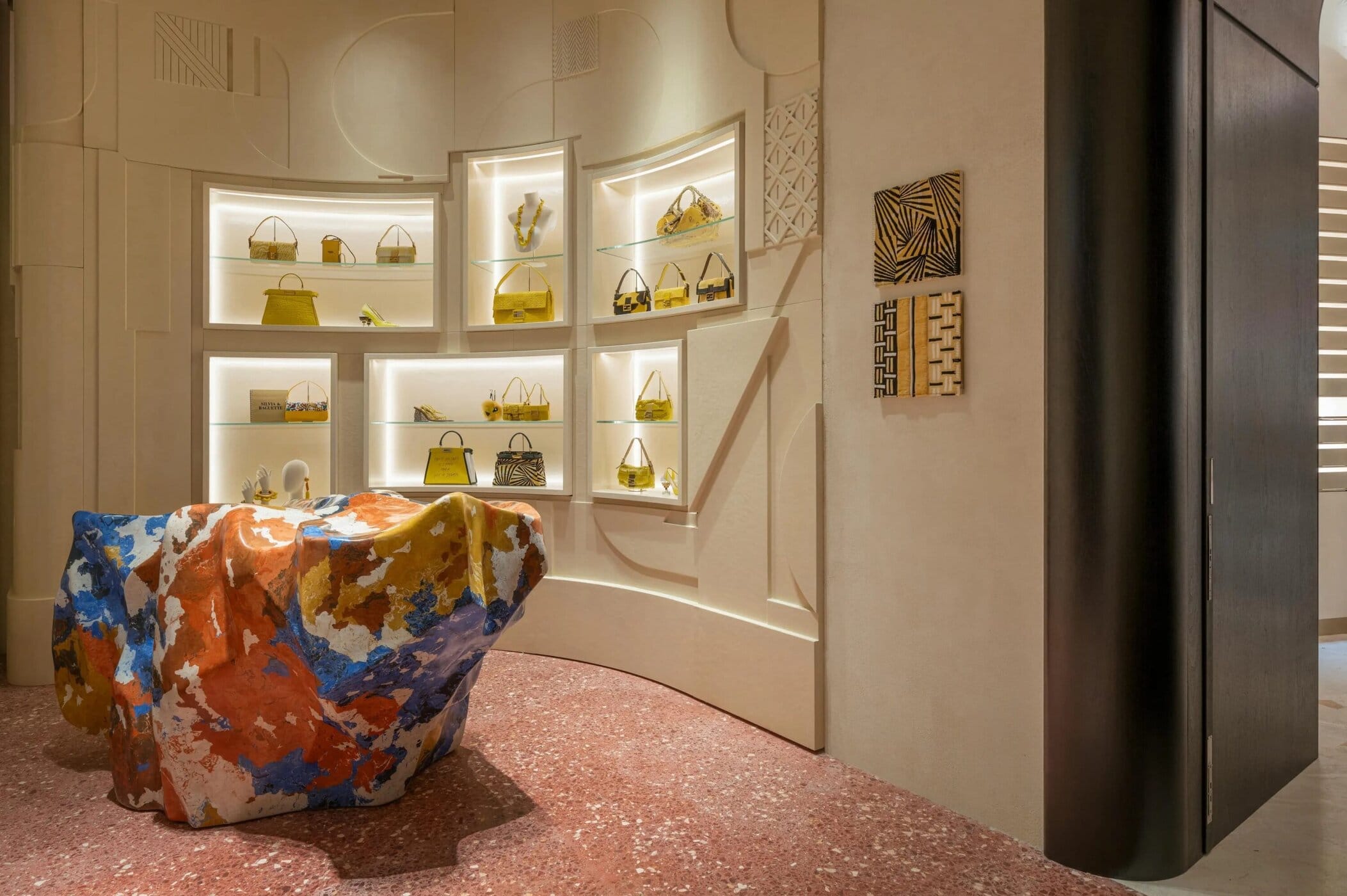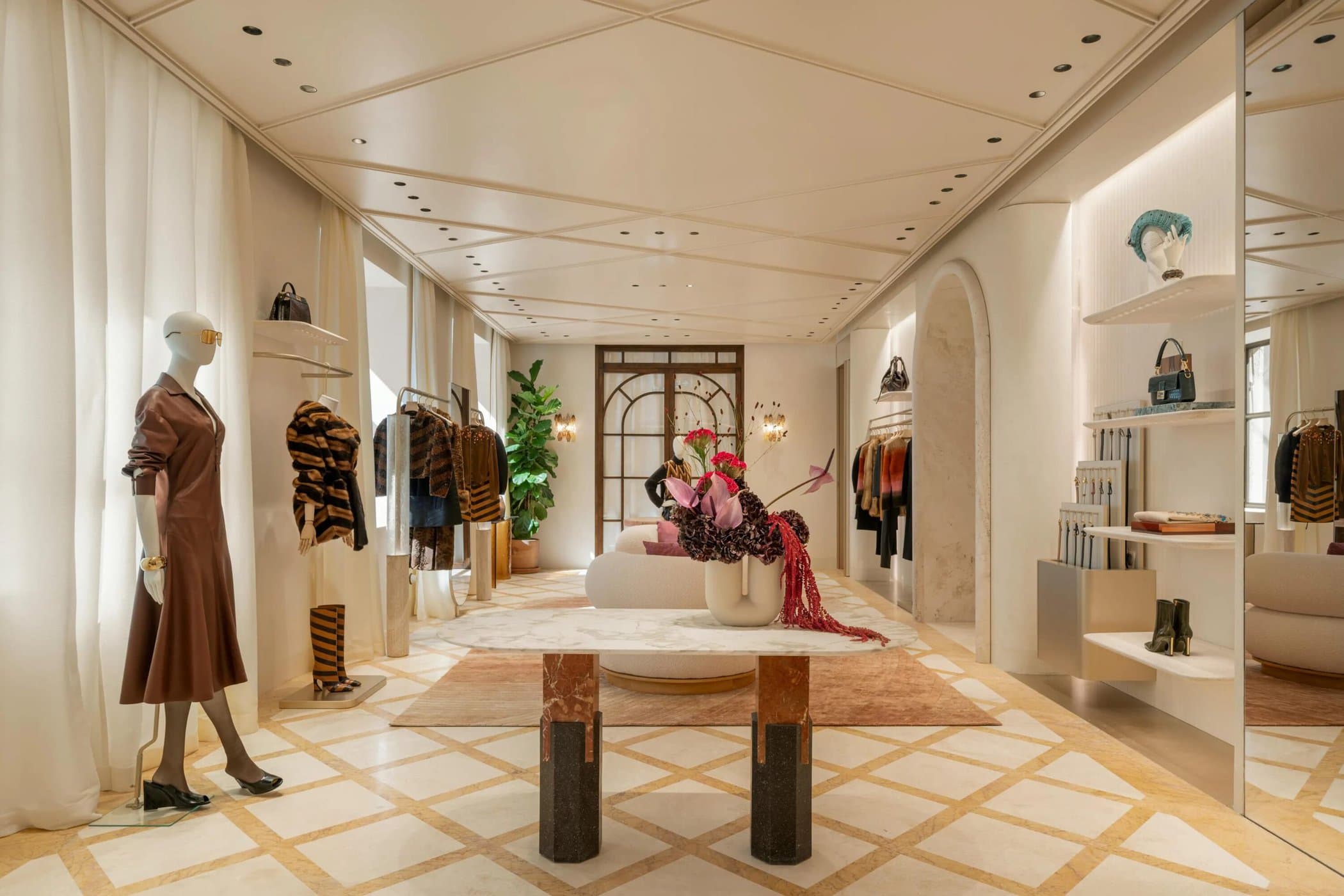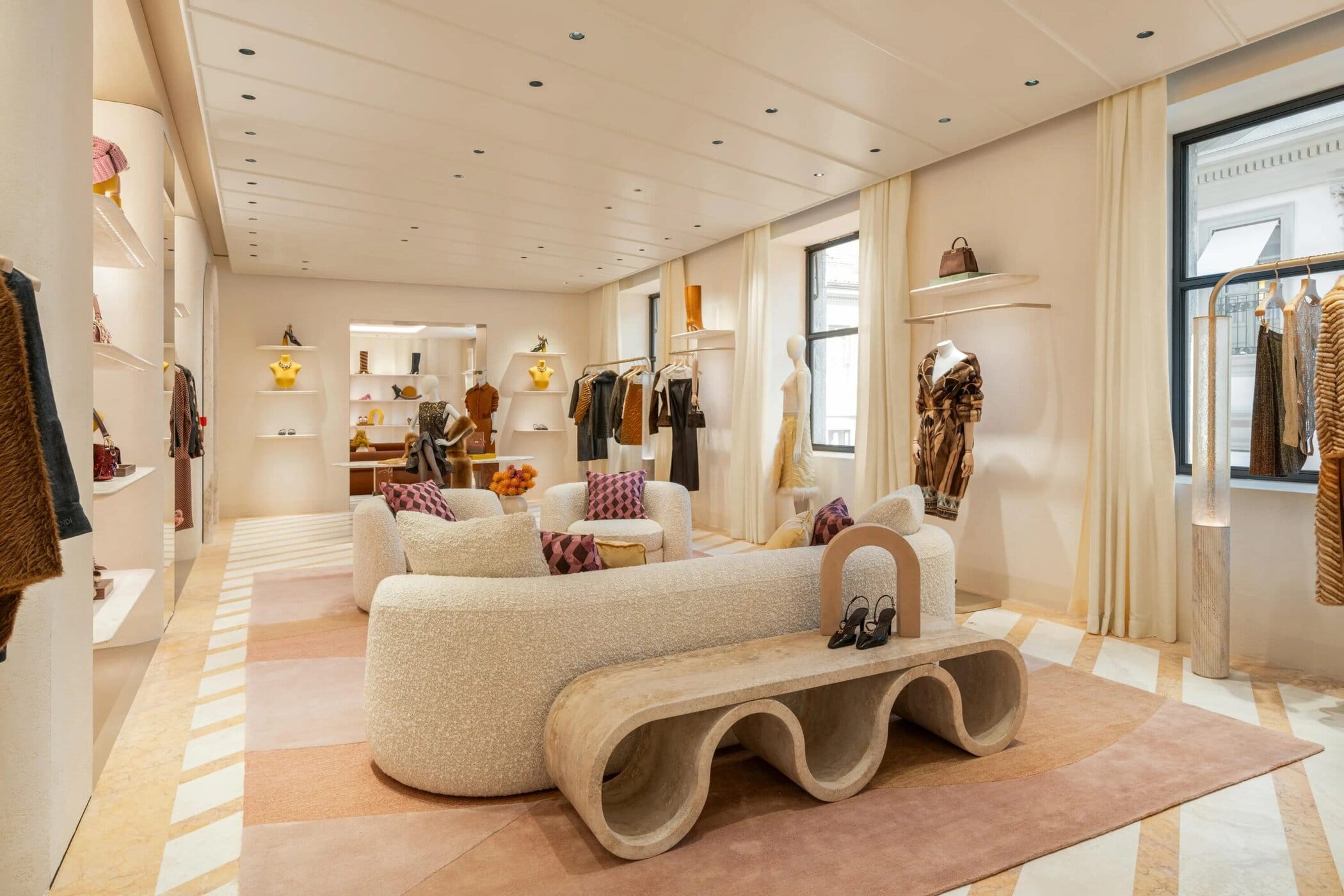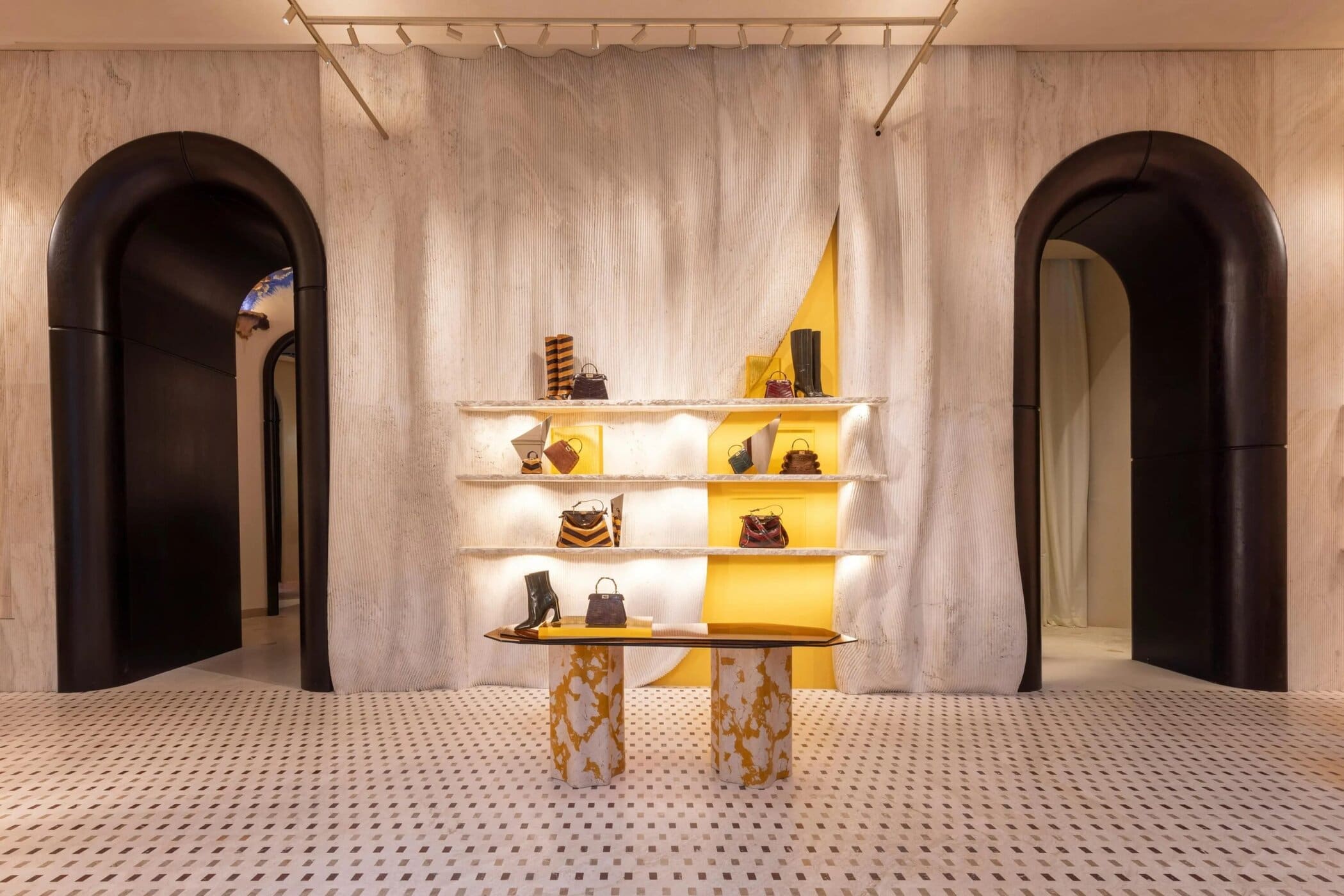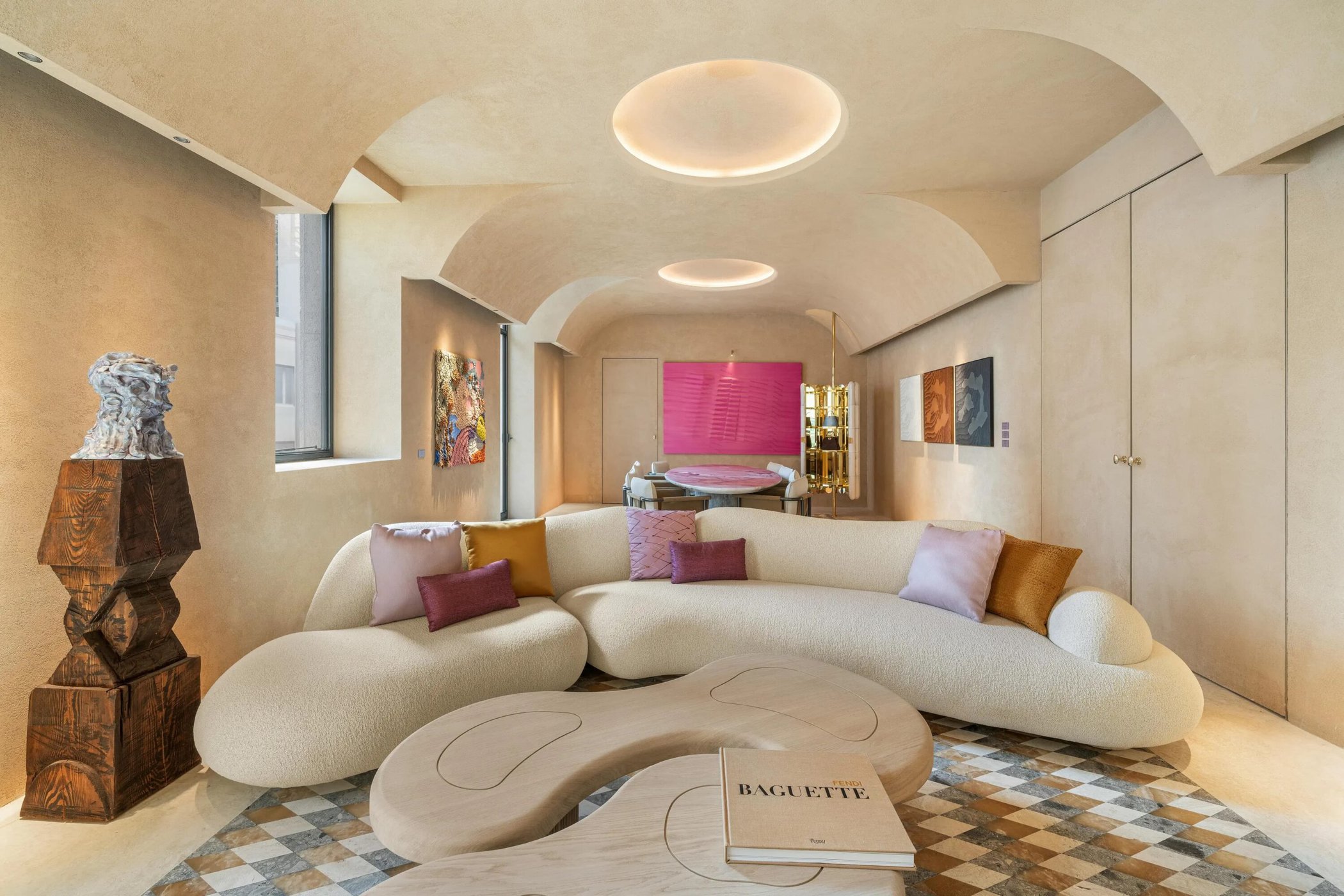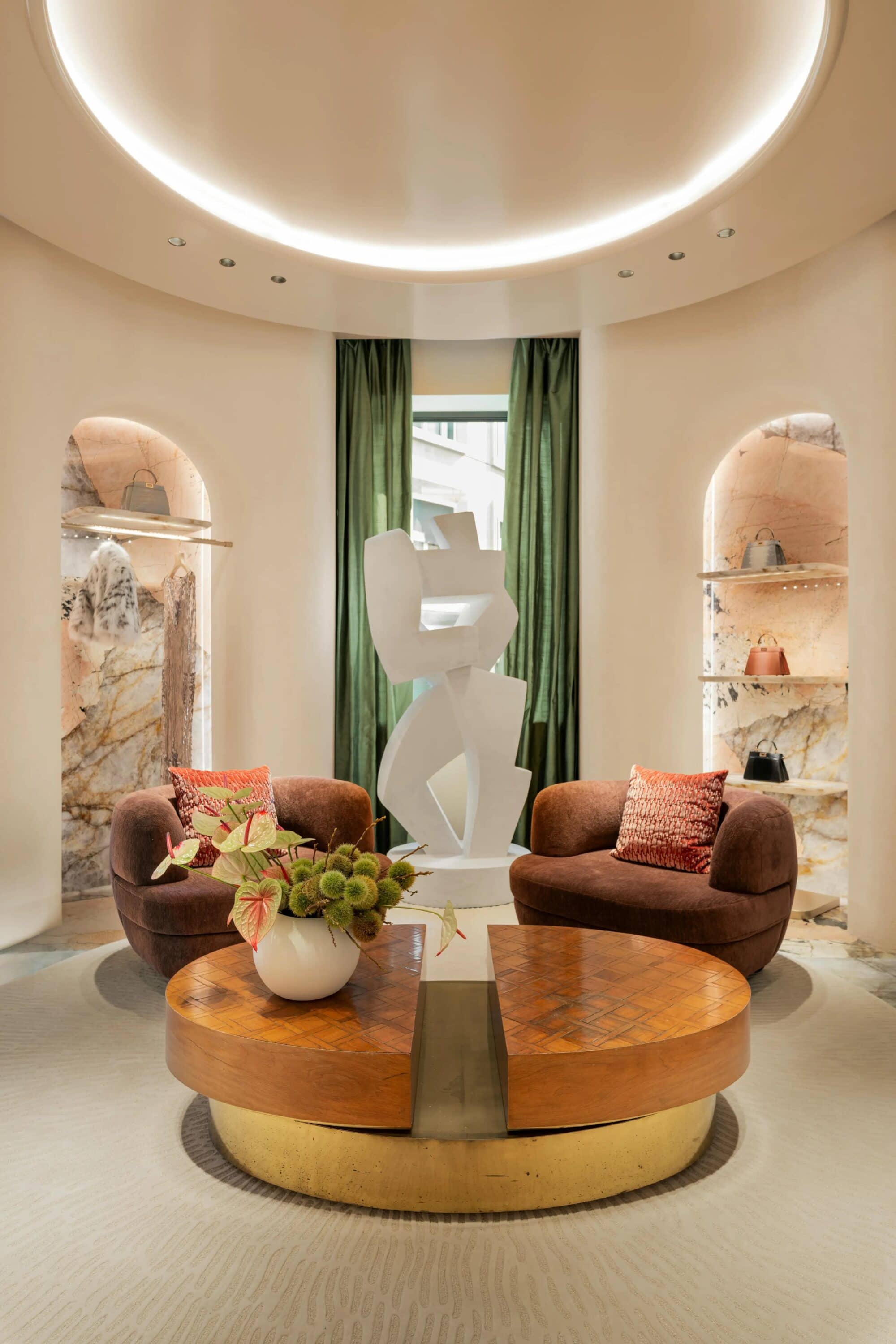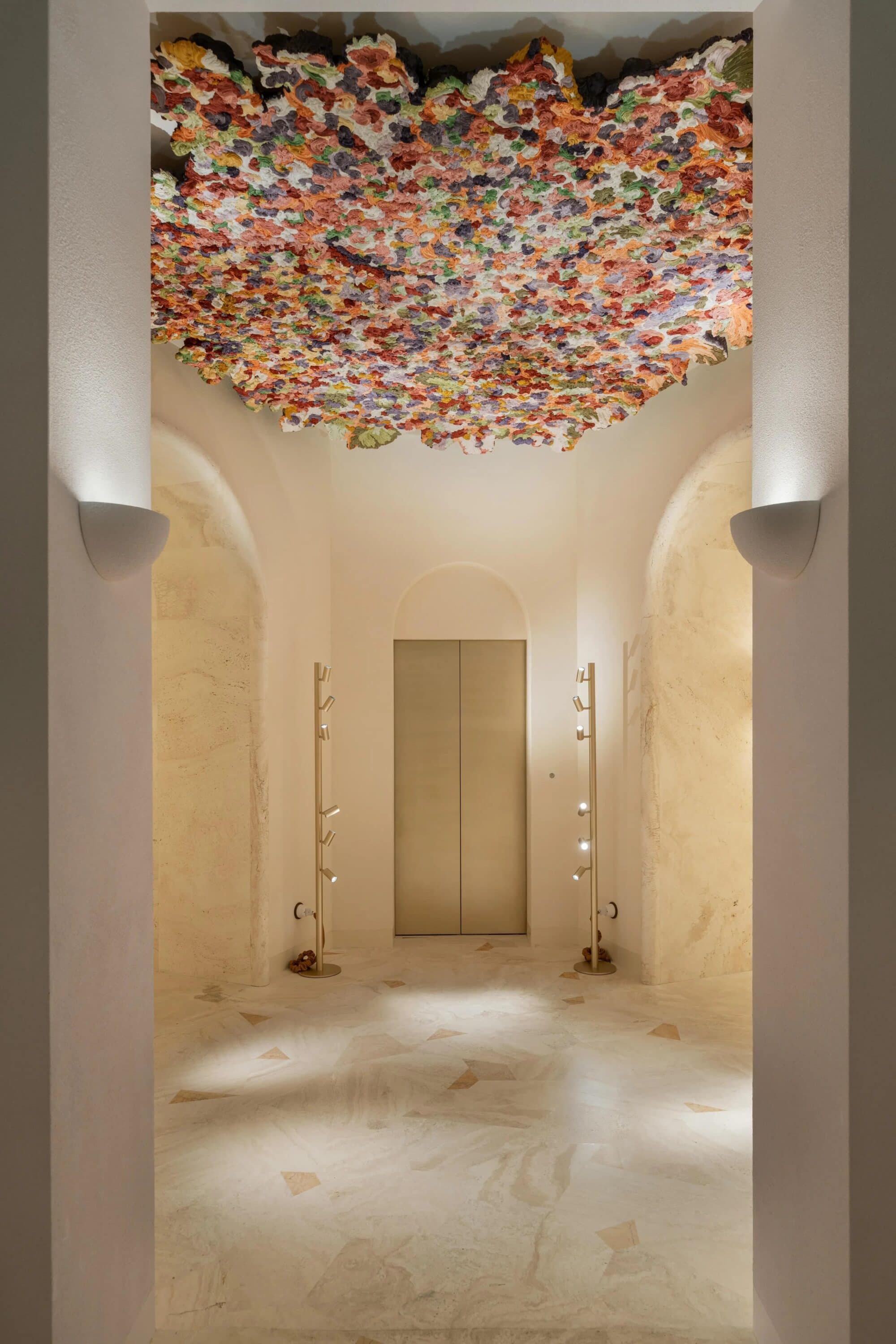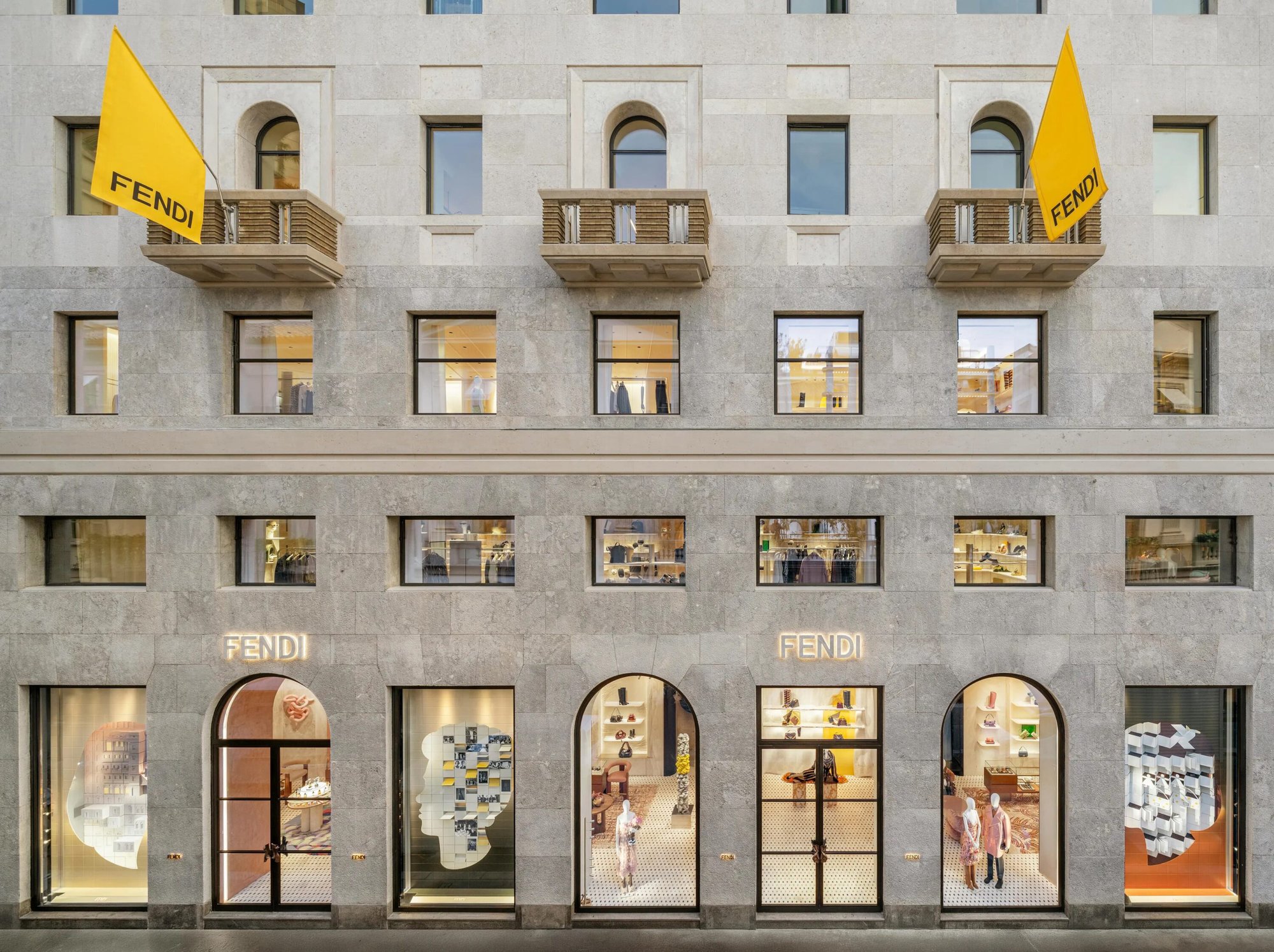A century of craftsmanship meets a new Milan chapter at Fendi’s Palazzo flagship
Fendi has unveiled its new flagship on Via Montenapoleone, a milestone that celebrates the House’s centennial while signaling a bold Milanese chapter. The Palazzo Fendi, housed in Emilio Lancia’s 1930s rationalist building, spans four floors and more than 9,800 square feet, blending Roman heritage with Milanese modernism.
At the heart of the opening is CEO Ramon Ros, in his first major statement since joining from Louis Vuitton China. “We must increasingly dream of creativity, and the numbers will follow,” he said. For Ros, the flagship is not simply a retail space but “a place of magic,” where history and innovation intersect.
Design as Narrative
The interiors fuse past and present: ribbed Travertino marble and Roman lime walls recall ancient columns, while geometric floor tiles, restored staircases, and delicate pink glass details nod to Milan’s Art Deco traditions. Warm tones soften the luxury, creating an inviting atmosphere that aligns with Fendi’s evolving vision of authenticity. The existing architecture is not overwritten but reinterpreted. It is woven so seamlessly into a new language that honors the building’s history while projecting Fendi’s future. Every detail, from the Cuoio Romano leather handrails with Selleria stitching to the preserved round windows reframed in metal diamond patterns, reflects this dialogue between preservation and reinvention.
Art as Dialogue
Art is central to the store’s identity. A ceramic column by Anton Alvarez, meteorite-like sculptures by Roberto Sironi, and a fresco ceiling by Edoardo Piermattei transform the flagship into a gallery-like experience. Piermattei’s collaboration extends into the atelier through the Rock the Craft initiative, where artisans reinterpret his sculptural language into fur inlays and bespoke Peekaboo bags. This is a strong linking of art, craft, and sustainability.
Craftsmanship & Community
The third-floor atelier is perhaps the most defining feature. Here, artisans work in real time, offering clients transparency into Fendi’s process while reinforcing values of traceability and personalization. Dedicated displays spotlight the House’s 100-year legacy, while limited-edition Peekaboo Artists bags made from archival materials point toward its future.Positioned at the intersection of Via Montenapoleone and Corso Matteotti, Palazzo Fendi joins a wave of new luxury openings in Milan, from Saint Laurent to Dries Van Noten. For Ros, however, the flagship is more than strategic—it is symbolic. “Customers are looking for authenticity,” he emphasized, noting the space’s deliberate balance of Roman identity and Milanese context.
The New Milanese Chapter
With its layered architecture, curated art collaborations, and living atelier, Palazzo Fendi redefines the flagship as both cultural destination and retail landmark. It reframes Fendi’s Roman spirit through a Milanese lens, ushering in a new era for the House at the intersection of creativity, craft, and community.
